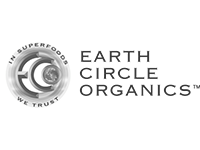Gluten Free
What does following a gluten-free diet mean? That you're embarking on an easy diet with a wide range of health-promoting effects. Instead of dwelling on what you’re giving up, consider that you’re going to enjoy a whole new world of delicious food options to meet your special dietary needs. You’ll be eating seasonally, choosing more fresh fruits and vegetables, focusing on meats, seafood, poultry, legumes, lentils, corn, and rice, and discovering fascinating ancient grains such as quinoa, amaranth, and millet. You’ll be able to eat potatoes, eggs, most cheeses, even chocolate (!)—and enjoy them without guilt because you’ll be taking good care of your body. In fact, you’ll probably end up eating—and feeling—better than ever!
Visit this page for more information about living Gluten Free
---
We carry a large variety of gluten free items, the brands listed below represent just some of the offerings we carry















More Diets
Bitter Orange for Weight Control
 © Martin Wall
© Martin WallHow Much Is Usually Taken by Dieters?
Although historically used to stimulate appetite, bitter orange is frequently found in modern weight-loss formulas because synephrine is similar to the compound ephedrine, which is known to promote weight loss. In one study of 23 overweight adults, participants taking a daily intake of bitter orange (975 mg) combined with caffeine (525 mg) and St. John’s wort (Hypericum perforatum, 900 mg) for six weeks lost significantly more body weight and fat than the control group.1 No adverse effects on heart rate or blood pressure were found. Bitter orange standardized to contain 4 to 6% synephrine had an anti-obesity effect in rats. However, the amount used to achieve this effect was accompanied by cardiovascular toxicity and mortality.2
Side Effects
Bitter orange oil may possibly cause light sensitivity (photosensitivity), especially in fair-skinned individuals.3 Generally this occurs only if the oil is applied directly to the skin and then exposed to bright light; in rare cases it has also been known to occur in people who have taken bitter orange internally. The oil should not be applied topically and anyone who uses it internally should avoid bright light, including tanning booths.
Internal use of the volatile oil of bitter orange is also potentially unsafe and should not be undertaken without expert guidance. Large amounts of orange peel have caused intestinal colic, convulsions, and death in children.4 The amounts recommended above for internal use should not be exceeded.
One text on Chinese medicine cautions against the use of bitter orange in pregnancy.5 This concern is not raised in any other reference, and the American Herbal Products Association classifies the herb as "class 1," an herb that can be safely consumed during pregnancy when used appropriately.6
Interactions with Supplements, Foods, & Other Compounds
Decoctions of bitter orange substantially increased blood levels of cyclosporine in pigs, causing toxicity.7 Bitter orange also inhibited human cytochrome P450 3A (CYP3A) in the test tube.8 This is an enzyme that helps the liver get rid of numerous toxins, and strongly affects metabolism of certain drugs. Bitter orange might, therefore, interact with drugs that are metabolized by CYP3A. To be on the safe side, bitter orange should not be combined with prescription medications, unless someone is under the care of an experienced natural medicine clinician.
Interactions with Medicines
Copyright © 2025 TraceGains, Inc. All rights reserved.
Learn more about TraceGains, the company.
The information presented by TraceGains is for informational purposes only. It is based on scientific studies (human, animal, or in vitro), clinical experience, or traditional usage as cited in each article. The results reported may not necessarily occur in all individuals. Self-treatment is not recommended for life-threatening conditions that require medical treatment under a doctor's care. For many of the conditions discussed, treatment with prescription or over the counter medication is also available. Consult your doctor, practitioner, and/or pharmacist for any health problem and before using any supplements or before making any changes in prescribed medications. Information expires December 2025.











